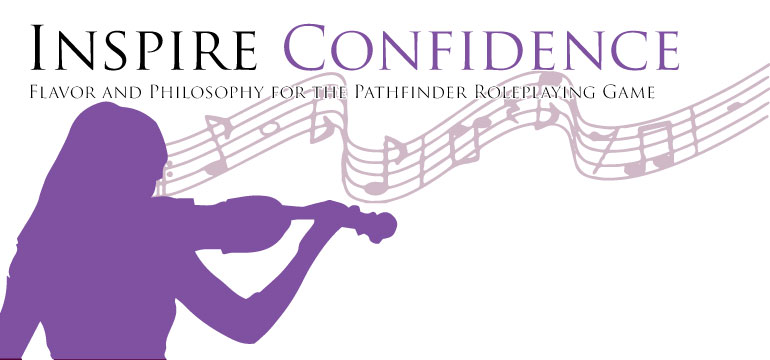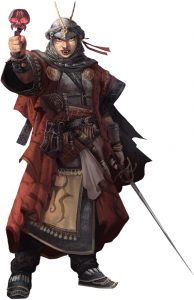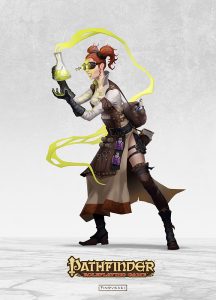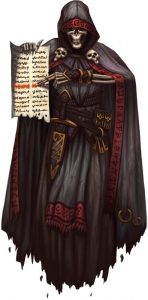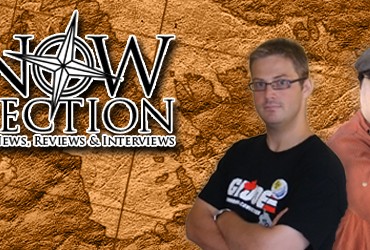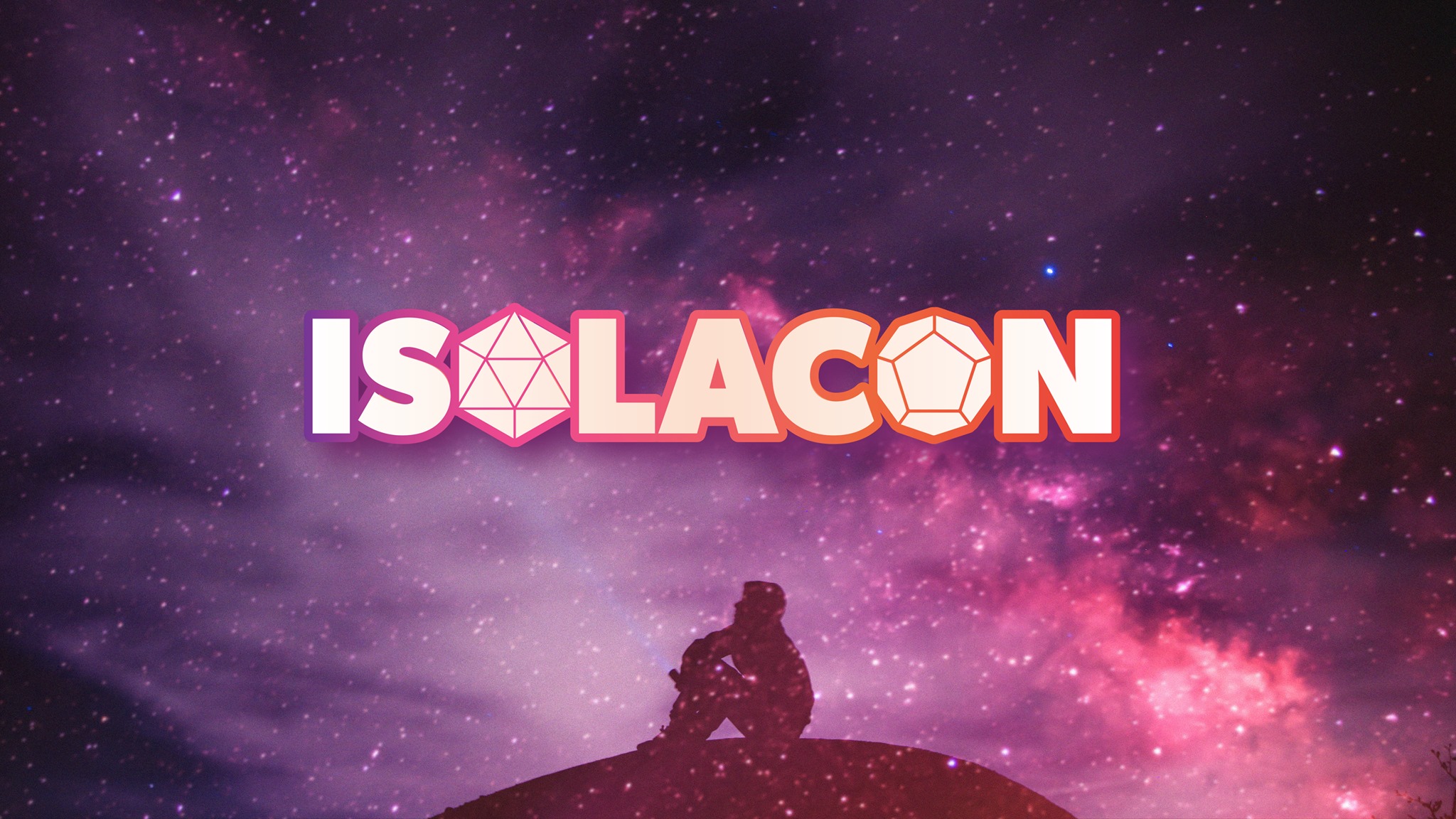By now you may or may not have seen this week’s Know Direction podcast where we reviewed Paizo’s Horror Adventures. If you didn’t catch it live, the replay will be available shortly (or is already listed just above this blog on the main page), which you should listen to for a full run down of the book. Hopefully I was part of the conversation, it was in the plans. However I can never tell what my work schedule will look like until it happens, so if I wasn’t on the podcast, I was with it in spirit. As a result I wanted to make sure I had the opportunity to go over some of the high points of Horror Adventures and specifically the implications of playing a PC generated from this unusual supplement and how to manage a horror game for GMs. I wrote this blog in advance of the podcast as I am certain we extensively covered the book.
The Highlights
Horror Adventures offers a lot of opportunities for new character concepts, both player and non-player. A brief look through shows the standards – spells, feats, items, and monsters, in addition to expanded rules for fear effects, and a new sanity system (because you can’t play mythos campaigns and not worry about losing your mind). A new system of corruptions adds a layer of horror that Pathfinder, allowing for established characters to find themselves in new and scarier personal spaces.
Corruptions are non-class additions to characters. Alex covered them on Monday’s Guidance. Corruptions can be beneficial or detrimental to a PC depending on the type of campaign being run and the choices made by the PC. Each corruption has a list of manifestations – expressions of the corruption – which each come with “gifts” (phenomenal cosmic powers) and “stains” (itty bitty living space), although you may not get both of them.
Corruption leads to all sorts of implications in a game, if a PC acquires an unwanted corruption, the party may work to help “cure” their friend or their “friend” may no longer be the person they once knew and a danger at close range. On the whole, corruptions are a vehicle to tell a horrific personal story and not a commentary to a character’s specific alignment, good, neutral, and evil characters may all have corruptions.
The character expanding portion of the book is where I’d like to focus today – specifically the archetypes and class options as well as touch on the horror rules.
Heroes or Anti-heroes?
Among the archetypes and class options you are going to notice that there are quite a few hard alignment requirements of evil or neutral. More often than not, when a group of players sit down to play, they do so with the understanding they’re going to be the “good guys” as the heroes of the story. Once we add the requirement of being evil to a story, getting a palatable protagonist’s story could require a change in perspective.
These characters aren’t helping little old ladies or saving a village by stopping the necromancer from turning the cemetery into an army, these characters are performing blood sacrifices or serving the Great Old Ones, definitely not your run of the mill adventuring heroes.
With non-good characters sitting at the table, it is imperative that the GM and players have some kind of palaver before putting together a party that may contain diametrically opposed philosophies. For example, it is possible to play an evil character, with a primarily good party, who believes that they are doing what needs to be done for the greater good. We had one such PC at our table once, the player and the GM had numerous conversations before the campaign began as well as during the campaign. There were many notes passed (which is also a great way to build tension from a GM’s perspective) to verify motivations and background activity. The PC was LE with a strong code to protect those he deemed “under his protection” and he dealt with anything that stood in the way of his understanding of the goals with extreme prejudice. This included secretly murdering my own PC’s mother while the party slept and he was on watch – she was sick and dying, it was a “mercy” that he put her out of her misery, it was only secondary that she was slowing us down and preventing us from getting to our goal in a timely fashion. It was a little strange finding out after the fact just how many evil acts the PC performed in downtime in order to forward the party’s goals.
There’s also the opportunity to play entirely evil or non-good parties in your own home brewed campaign or Paizo’s Hell’s Vengeance AP. While I do not have personal experience with this AP, a quick look through shows that the PCs may range from amoral mercenaries to full out bad guys working in tacit support of House Thrune. Without ruining the AP for anyone who may want to play it, we’ll just say that this is not an AP for players who question whether it is ethical or not to kill creatures that may or may not be innocent. Playing good guys is an easy buy in, playing bad guys isn’t for everyone. Setting aside your morals and ethics for the purposes of extended immersion in an evil mind set of an imaginary character can be uncomfortable and difficult. Ultimately, as gamers we’re here to have fun, if it isn’t fun, you don’t have to continue. Talking with your party and your GM regularly about what’s going on is important, especially if it makes the game no longer fun.
Regardless of where you choose to play the non-good options, definitely take time to explore what series of events brought your character to the point in their life where they are a dark elementalist or an Elder Mythos cultist. Portraying a two dimensional, mustache twirling bad guy isn’t going to bring the best horror options to your horror game. Which brings us to personal horror.
Personal Horror
I talked about Horror Adventures shortly after PaizoCon with special attention paid to consent and handling mature subject matter. It is worth revisiting that blog before you and your party engage in a game of horror.
Personal horror goes beyond bad things happening to good people and you happen to witness the situation. Personal horror is bad things are happening to your or because of your decisions and you have to deal with the fall out and repercussions of your actions, some or all of the horror is internalized. With HA in play there is the opportunity to play with the sanity system to guide the internal struggle of the PC, but there are also some great options starting with Chapter 5: Horror Rules and on further back. There are curses, diseases, how to create horrific settings, and how to engage in the art of telling a horror story. While not expressly put in the book, horror stems from the feeling of loss of control over a situation, from the loss of agency.
It truly is an art to sit around a table and craft a dark, scary story about things that go bump in the night. The best and fastest way to make sure that happens as a GM is get buy in from your players. Ask that they limit the distractions at the table. Get to know your players – find out what makes them squirm and what makes them leave the table, know the difference and don’t cross the line. Setting up a creepy atmosphere is a great way to start, actually triggering your players is a great way to lose your group.
Buy in from the players requires them to be willing to accept that their PCs might be vulnerable, that the PCs might feel out of their depth. Consider every time you’ve ever watched a scary movie and said “I wouldn’t do that!” “Don’t open that door!” “Don’t split the party!” All of those things are easy to say from the comfort of your well-lit living room (I never watch scary movies at night, I am a big chicken), but how would you really be acting if you really found yourself alone in the mountains with 4 friends, with one of them missing and the storm has washed out the only road back to civilization and the power? Could you really leave your friend lost out in the woods? There really aren’t wendigo, right? That is the place you need your PCs to be for good horror games – in the “real” world of your fantasy world.
Shaking things up from rules as written helps to keep the players and their PCs on their toes – monsters with changes in their weaknesses and strengths makes encounters less rote. Lacking the knowledge that players and PCs once thought they had keeps everything uneven and uncertain. It’s not something to do every encounter, as the GM you aren’t here to beat the PCs, the goal is to entertain your friends with a shared story.
Losing by winning is another method to increase the sense of dread and remove some agency from the PCs. The PCs succeed at taking down the evil altar, only to discover that the altar maintained the stability of a greater binding that is now broken and a rift is opening between this plane and another. As players, we have been rewarded by using the sword and “kill it all, kill it dead” mentality. As a GM, if you’re going to get tricky on how the problems are solved, don’t play those clues too close to your vest. Don’t spoon feed things to the players, but make sure that there are plenty of opportunities and a little guidance to see that the haunts might hold clues to deeper mysteries if they’re solved and put to rest rather than throwing a cleric at it until it’s gone.
Do your homework
The final pages of HA holds a treasure trove of film and book titles to get you in the mood to call forth the demons that hide in the dark recesses of your mind. Don’t just go in cold. Horror done wrong is silly or apathetic, but done right, it will leave a (hopefully enjoyable) mark on your players that they will talk about for years to come as “remember that game where the GM scared us half to death?”

